sexuality
Furries officially join Baltimore Pride Parade for first time
Posted by kitdrago on Sat 25 Jun 2022 - 06:48Furries have always been present at Baltimore Pride. They can easily be spotted walking in the crowds, entertaining children, adults, and pets alike, even walking down the side of the pride parade route. For the first time ever, though, the Furries will be participating as official entrants in the Baltimore Pride Parade.
Mid-Atlantic Anthropomorphic Association, the 501c3 charity behind the Fur the More Convention, reached out to the Maryland Furs community a couple weeks ago to invite fursuiters and community members to join them in the pride parade. Accompanied by ThatCorgitude's Rainbow Dash Mustang car, the furs will walk the one mile parade route along North Charles Street from Art Museum Drive this Saturday June 25th. The parade starts at 1:00pm as part of a week long celebration in Baltimore, MD.
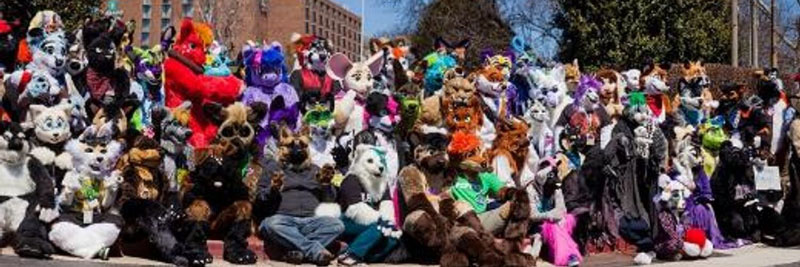
So how many animal genitalia based sex toys do you own?
Posted by crossaffliction on Sat 7 May 2016 - 17:25Concerns over conduct of Northwestern sexology researcher
Posted by jm on Mon 4 May 2015 - 20:24 Kevin Hsu is a sexology researcher based at Northwestern University on the outskirts of Chicago. In 2013 he sought, and received, approval from the Northwestern Institution Review Board (IRB) – an ethics committee that oversees research with human subjects – to study furries.
Kevin Hsu is a sexology researcher based at Northwestern University on the outskirts of Chicago. In 2013 he sought, and received, approval from the Northwestern Institution Review Board (IRB) – an ethics committee that oversees research with human subjects – to study furries.
Hsu's research is intended to follow work published by Dr. Anne Lawrence in 2009, which references furries as a group possibly displaying a hypothetical phenomenon associated with fetishistic behaviour named "Erotic Target Location Error". Hsu's hypothesis is that many furries – possibly most – are zoophiles, where that attraction manifests as the furry identity and in activities such as fursuiting, and that furries can therefore be classified as "autozoophiles".
Review: 'The Face in the Mirror' and 'Chained Reflections', by T. R. Brown
Posted by Fred on Fri 25 Jul 2014 - 00:52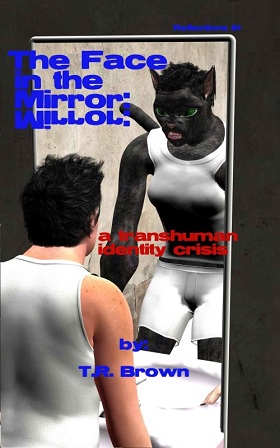 These are the first two volumes of T.R. Brown’s Reflections series. Amazon.com has a special subcategory for them: Genetic Engineering Science Fiction. They should be required reading for every furry author who plans to write human-into-anthropomorphized-animal fiction. They are also good reading for everyone else.
These are the first two volumes of T.R. Brown’s Reflections series. Amazon.com has a special subcategory for them: Genetic Engineering Science Fiction. They should be required reading for every furry author who plans to write human-into-anthropomorphized-animal fiction. They are also good reading for everyone else.
The two are narrated by the protagonist, Todd Hershel. The setting is an unspecified future, but there are automatic/robot cars, artificial islands (“Libertarian Colonies”) for dissidents, personal computers that unfold from pocket-size, artificially-grown organ harvesting, references to a second American Civil War in the recent past and “the Vatican in exile” and bioengineered animal people grown for soldiers in wars. For legal reasons, these humanoid “neos” are required to look like the animals they are based upon.
I was driving back from a meeting with a supplier and there was a semi pulling a load of scrap metal slightly ahead of me in the next lane. My car alerted me to be ready to take over manual control, pulling me away from the e-mails I had been working on. I saw the reason immediately. An accident a couple of miles ahead. An ambulance and other emergency personnel were already on site. That probably saved my life. […] the semi next to me had a blowout in the front wheel. […] Autopilots are good, but they can’t handle an emergency like that and, before the operator could take over, the semi jerked into my lane […] (p. 1)
Todd wakes up in a hospital two months later. His body was completely crushed by the scrap metal. Since this was an unplanned medical emergency, no substitute body has been prepped for him. The only suitable usable body that can be found on emergency notice is a brain-dead felis neo – a female, at that. Todd’s wife Colleen is not happy about that, but she agrees that the important thing is to save his life. They can worry later about getting a new human body, or at least a sex-change operation back to male and cosmetic surgery to make him look more human, later.
The first 50-odd pages are filled with the details of Todd’s exploring his new body, bioengineered from a panther to be a brawny feline soldier.
“We considered just putting your head on the new body,” Walt [a doctor] continued, “but, in addition to the aesthetic problem of a human head on a felis body, there would also have been tissue rejection to deal with.” (p. 9)
The Face in the Mirror; A Transhuman Identity Crisis, by T. R. Brown, Seattle, WA, CreateSpace, August 2012, trade paperback $17.40 (501 pages), Kindle $2.99.
Chained Reflections, by T. R. Brown, Seattle, WA, CreateSpace, August 2013, trade paperback $19.99 (558 pages), Kindle $2.99.
Raccoons after dark: their haters, and their lovers
Posted by Patch Packrat on Sat 3 Nov 2012 - 00:18Urban raccoons are known as cute, smart, yet sometimes destructive pests that cause headaches for homeowners. Their mischief can range from raiding trash, to sensational headlines about terrorized neighborhoods that call for traps and controls.
According to the PBS nature show Raccoon Nation:
In an effort to outwit raccoons, we may be pushing their brain development and perhaps even sending them down a new evolutionary path. One biologist who has been studying raccoons for 25 years believes the city life is in fact cultivating “über-raccoons,” ready to take over the world.
While PBS jokes about "über-raccoons", Germany has somber, no-nonsense, bedenklich news about their Nazi raccoon occupation.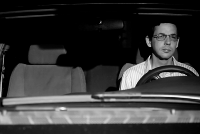
Some people worry about repelling them, but other people have a much more welcoming point of view... although they might keep their unsavory interests on the down-low. Mauricio Baiocchi, a distinguished San Francisco Bay area animator with credits from Industrial Light and Magic, lets us in on their sordid secrets in his 2011 short film, Cooners.
Opinion: Haters in Furry
Posted by bastett on Mon 7 May 2012 - 15:25JM Horse just posted an article on [adjective][species] about haters in the furry community, with some controversial suggestions as to their motives.
In the furry community, we don’t have a significant problem with homophobia. But we do have a problem with hatred towards some of the more unusual sexual orientations and interests, such as transexuals, babyfurs, zoophiles, and more. In all cases, people are being attacked for things that are innate.
Interesting read, if provocative at times.
Review: 'The Worth of a Shell' and 'Clays Beneath the Skies', by M.C.A. Hogarth
Posted by Fred on Tue 10 Apr 2012 - 23:23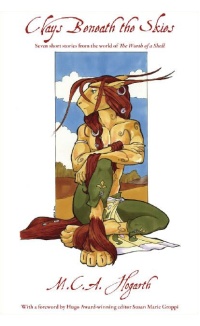
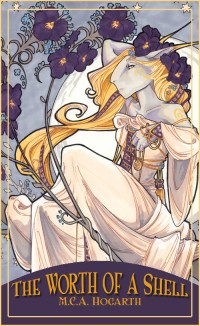 Maggie Hogarth’s Jokka s-f stories, featuring the tri-sexed scaly aliens of the planet Ke Bakil, made their debut in the short story “Money for Sorrow, Made Joy” in the Strange Horizons weekly online s-f magazine on November 26, 2001. Six further Jokka short stories followed to 2010; notably including “Unspeakable”, the third, also published on Strange Horizons on November 4, 2002.
Maggie Hogarth’s Jokka s-f stories, featuring the tri-sexed scaly aliens of the planet Ke Bakil, made their debut in the short story “Money for Sorrow, Made Joy” in the Strange Horizons weekly online s-f magazine on November 26, 2001. Six further Jokka short stories followed to 2010; notably including “Unspeakable”, the third, also published on Strange Horizons on November 4, 2002.
“Unspeakable” was a finalist for the 2003 Spectrum Award1 in the Short Fiction category, and was included in the Strange Horizons: Best of Year Two anthology. There have been more Jokka short stories since 2010.
Are the Jokka sufficiently Furry for Flayrah? Ever since Furry fandom voted overwhelmingly for Avatar over Fantastic Mr. Fox for Best Anthropomorphic Motion Picture in the 2009 Ursa Major Awards, it looks like anything alien is Furry enough. The Jokka have scales, manes, tails, moveable ears, and fangs; they drool venom; they lay eggs as well as having live births (their biology is VERY bizarre), and they look enough like bipedal horses that at least one reviewer has described them as “horse-like” despite their illustrations by Hogarth (and the author should know). Yes, that seems Furry enough.
“The Worth of a Shell”: North Charleston, SC, CreateSpace, October 2009, trade paperback $15.00 (394 [+ 1] pages, map), Kindle $3.99.
“Clays Beneath the Skies”: Tampa, FL, Stardancer Studios, June 2011, trade paperback $15.99 (xii + 183 [+ 1] pages), Kindle $3.99. Illustrated by the author. Foreword by Susan Marie Groppi.